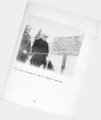| OCR Text |
Show THE ALTA AVALANCHE STUDIES / M. M. Atwater, Snow Ranger at Alta, IJt&h and I/' F. C. Koziol, Supervisor, Wasatch National Forest I. INTRODUCTION The following digest and analysis of the Alta snow studies is designed particularly for the instruction of Forest Service personnel who have duties in alpine ski areas. It is also offered for the information of snow observers, skiers, and interested persons generally. The study l$ based on 10 years continuous observation of avalanche phenomena at Alta, Uta&, interpreted in the light of personal experience and snow data from foreign sources. While this survey derives from and applies particularly to Alta, the methods of avalanche study and hazard forecasting and the safety procedures developed have general application. With modification, they can be employed in any area and will serve as a take-off point for further investigation of a complex, fascinating, and important subject. There is no suggestion that the final chapter on snow research is included. With decades of much more intensive effort and study behind them, the Swiss are first to admit that the time when man can predict exactly the hour, location, and violence of an avalanche has not yet arrived. James Laughlin, noted American ski mountaineer, reported from Switzerland during the 19^8 Winter Olympics that Swiss ski areas were closed for as many as 10 days at a time on account of avalanche hazard. With widespread and increasing interest in the development of alpine ski areas it is essential that the snow information we have be assembled in brief and logical form. The material presented here is original, not a rehash of previous studies or a review of textbook theory. Field observations at Alta are the source, confirmed whenever possible by other authorities. They are believed to be the only comprehensive body of avalanche research material in this country. Avalanche research in the United States has taken a course of its own. The emphasis is on practical observation and experience rather than technical or laboratory analysis. There is no parallel in this country for the Swiss Avalanche Institute. In Switzerland, avalanches have been and are a major social and economic problem. The Swiss people have lived and worked for centuries with the hazard at their elbows. The revenue from visitors to their developed ski areas is an important part of the national income. It is only natural, therefore, that the Swiss should have devoted more energy, time, and money to snow research. |








































































































